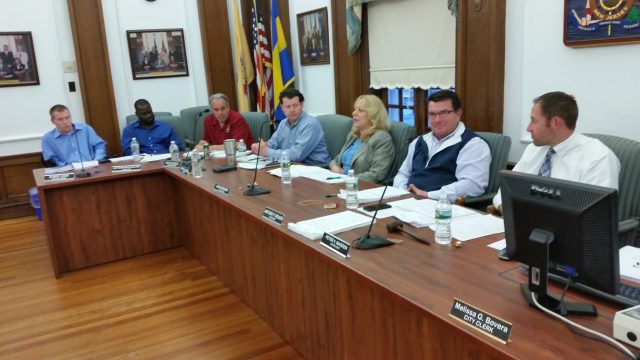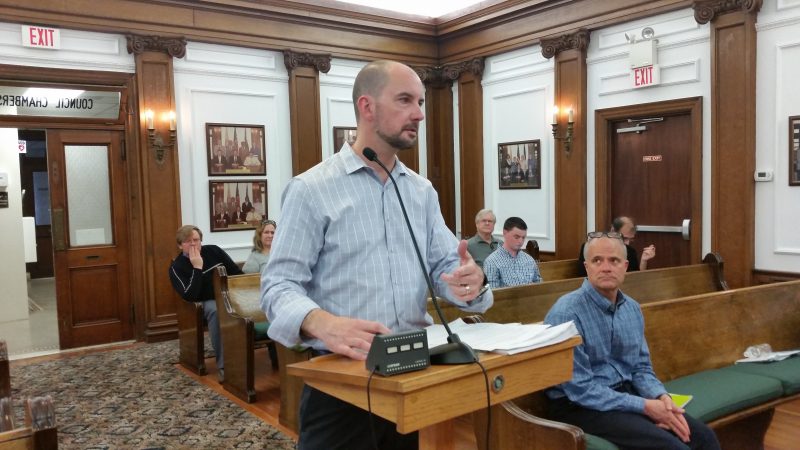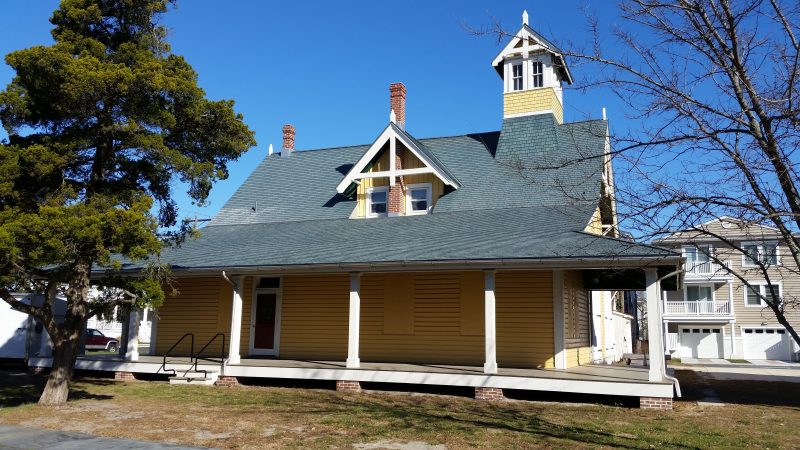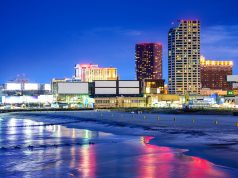
By Donald Wittkowski
City Council on Thursday night approved a $76.9 million municipal budget that includes funding for an unprecedented amount of construction projects spread throughout the city to help modernize an aging infrastructure system.
The 2017 spending plan raises the local tax rate by nearly 3 cents, adding an extra $143 in local taxes per year to a home assessed at $500,000. The figure does not include county and school taxes, which are assessed separately.
Frank Donato, the city’s finance director, said higher taxes will help finance $33 million worth of new construction projects this year in Mayor Jay Gillian’s proposed capital plan.
“It comes at a price,” Donato said while explaining the tax implications to Council.
Calling it the largest capital plan in the city’s history, Donato noted there will be projects stretching “from the beach to the Boardwalk to the bay … and everything in between.”
The mayor has placed a heavy emphasis on road construction, drainage upgrades, dredging projects and the Boardwalk’s ongoing rehabilitation to help overhaul parts of the city’s infrastructure that are decades old.
Council members said they regret having to raise taxes, but stressed that the budget reflects the desire of local residents for more capital improvements in their neighborhoods.
“I believe this budget meets not all, but most, of those needs, so it’s a good start,” Councilman Bob Barr said.
Only one resident spoke during a public hearing on the budget. Marie Hayes, of Battersea Road, told Council “let’s not fool ourselves” into thinking that property owners will not object to higher taxes.
“The taxpayers are not happy about this increase,” she said.
In particular, Hayes criticized the 2 percent wage increase for city workers included in the budget. She questioned why municipal employees are getting a raise at a time when some workers in the private sector of Cape May County are struggling with stagnant wages or no jobs.
Council members responded that wage increases are set through the collective bargaining process for municipal unions. They said it would probably cost the city more if it tried to fight a wage increase and became mired in binding arbitration that could result in workers getting even larger raises.
The city’s growing tax base will help underwrite the capital costs. The ratable base has increased by about $120 million compared to 2016 and now totals nearly $11.6 billion, a good sign of the city’s financial strength, Donato said. The ratable base is the combined value of all taxable real estate.

In addition to local property taxes, the city has the ability to tap other sources of revenue to help finance the budget. Beach tag sales and parking operations are two of the biggest revenue generators. The budget forecasts $4.1 million in beach tag sales and $3 million in parking revenue for 2017.
In other business Thursday, Council approved a $2.9 million contract for the last part of the Boardwalk’s multiyear reconstruction between Fifth and 12th streets.
Work in the final phase of the project will take place between 10th and 12th streets. It will include replacing aging sections of the Boardwalk’s deck with new wood and building a new concrete substructure. New ramps that meet the Americans with Disabilities Act requirements are planned from the Boardwalk to the beach at 10th, 11th and 12th streets.
Construction is scheduled for the fall and winter. Council awarded the contract to Fred M. Schiavone Construction Inc. of Malaga, N.J., the low bidder. Schiavone was the contractor for three earlier phases of the Boardwalk’s makeover.
In another vote, Council approved about $21,000 in additional funding for the renovation of the old Ocean City Life-Saving Station into a museum. The money will go toward a new fire-suppression system that meets modern building codes.
The extra money prompted sharp questions and comments from Council about the project, which has dragged on for years. The museum finally appears headed for completion this summer.
“Yes, it has been long,” acknowledged John Loeper, who heads the nonprofit group that is overseeing the project and will run the museum for the city.
Loeper originally had hoped to have the museum ready by Memorial Day weekend, but work on the fire-suppression system will probably push back the grand opening until July, he said.

Councilman Michael DeVlieger, who first questioned the need for the extra $21,000, characterized the project as “a nightmare” overall. He said he hopes there will be no more requests for additional city funding.
DeVlieger, though, called the Life-Saving Station a historic jewel that should be preserved. Other Council members also expressed their support for the project, but they joined with DeVlieger in raising concerns about the need for more funding.
“Any time this comes up, it’s a lightning rod,” Councilman Keith Hartzell said.
Barr challenged the project’s influential backers to finally “step up” to fulfill their original promise to raise private funding. Responding to Barr’s comment, Loeper said 90 private supporters have donated $250 each to help pay for the museum’s historic artifacts.
The museum’s nonprofit operating group has also agreed to share as much as $750,000 in revenue with the city to offset its costs.
Council members said they would be willing to organize or participate in private fundraisers for the project. Hartzell said he believes private fundraisers would “show good faith” to taxpayers.
Meanwhile, renovations are underway to transform the Life-Saving Station into an interactive “living museum” that will recreate the building’s 1905 heyday and pay homage to the lifeguards who risked their lives to save others.
For years, the old building itself was in need of rescue. The city purchased the two-story structure from private owners in 2010 for nearly $900,000, ending a decade-long battle to save it from demolition.
Altogether, the purchase price for the building and the cost of renovations will come to about $3 million, according to figures released last year by city officials. The city has been awarded nearly $1.3 million in grants to help pay for the project.





